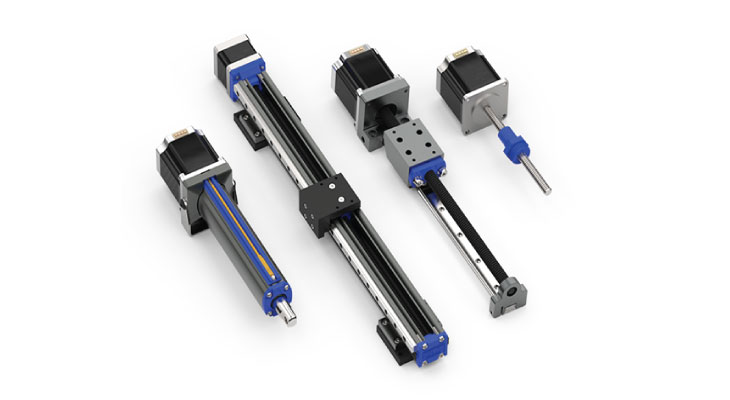How Linear Actuator Systems Benefit Automatic Hospital Bed Design!

There are more hospital beds than nurses and doctors in any given hospital. As the gap continues to grow, so does the need for more efficient, automated hospital beds to help save time and resources.
Facing unprecedented challenges, new automatic hospital bed designs can benefit from linear actuator systems thanks to:
- Relatively small actuator size
- High power combined with high efficiency
- Modular design
There are more hospital beds than nurses and doctors in any given hospital. As the gap continues to grow, so does the need for more efficient, automated hospital beds to help save time and resources.
Linear actuators can help enhance your designs for demanding applications such as this. The image below shows various places where linear actuators could be placed in an automatic hospital bed.
The Challenge
Safety: The FDA's Guidance Document, "Hospital Bed System Dimensional and Assessment Guidance to Reduce Entrapment," and IEC requirements standard 60601-2-38 are driving increasingly complex design geometries and safety features meant to prevent pinch-points and areas of entrapment. Movable sectional rails and more points of articulation in the frame and the new regions of bed movement will benefit from the precise motion control and positional feedback available with Helix actuators.
Power: The more movable components included in a bed design, the more likely it is that areas of high strain or lifting moment will occur.
Geometric Size Constraints: More functionality must be achieved in the smallest possible footprint.
Patient Comfort and Therapy: There is a growing need for increased movement and articulation (with the concomitant need for linear actuators). Lift or sit assist, and other solutions designed to give better care with less demand on caregivers require new design strategies.
Reliability: Designs must target the highest possible reliability.
Cleanability: Increased emphasis on hospital-based infection prevention demands good cleanability of all touch surfaces, ideal for smooth-surfaced enclosures and guards. Small-footprint actuators help simplify enclosure design.
Maintainability: Components and mechanisms must be designed to return to whole quickly, with safe usability to meet the realities of demanding medical environments.
The Solution
- Precision Helix actuator systems simplify the design of safe, quiet, and reliable power-driven positioning. These systems integrate easily with increasingly complex moving components and controls.
- Actuator systems for automatic hospital beds can range from 2" to 24" stroke actuators with the power to handle up to 6,000 N loads.
- Our continuous, documented ISO 9001 procedures offer you full accountability and quality records that can be fine-tuned to your GMP and/or QC requirements.
- Whatever the need: lowering, raising, repositioning, mobility, patient transfer actuators make small footprint design possible by combining high-efficiency motors with precision-formed metals and engineering resins.
- Helix actuators contribute directly to smooth, precise, and quiet movement designed to enhance patient comfort. With their quiet operation, highly-controllable motion, and lock points, electric actuators continue to supplant other types of hydraulic or mechanical systems.
- Precision manufacturing and materials engineering help ensure the reliability of Helix actuators.
- Low-friction, precision-machined surfaces and dimensionally-accurate plastics molding, which can utilize PTFE-infused or self-lubricating resins, help reduce maintenance.
- Enclosure design and other design features for cleaning are simplified, thanks to their small footprint and flexible design options.
- If you need custom components, our design team will work with you to create a linear motion solution to meet your motion, NVH, power, and footprint specifications.
- Fully modular design, plus a broad range of mounting options, work together to create components that can be field-modified, repaired, or swapped out quickly, reducing time constraints on medical, bio-engineering, and maintenance personnel.
- Helix actuators are well-suited to a broad range of design objectives, including lifts and rotators, sit-to-stand lifts, and mechanisms for patient transfer.
Helix Design Advantages and Benefits
- Maintenance-friendly, many linear actuator components can be maintenance-free in regular use.
- Quiet operation
- Powerful actuators accommodate loads up to 6,000N designed to enhance safety
- Our modular engineering approach enables versatile, customizable design to meet specific application needs
- Simple installation, especially compared to hydraulic and pneumatic systems, plus there are no space-consuming hoses or pumps
- User-friendly design
- Compact and light-weight
- Space-saving smooth operation and precise control
- Long life expectancy
- Energy efficient
- Non-toxic
The Helix Advantage
Helix Linear Technologies offers the broadest product line of any lead screw manufacturer, including a full line of rolled, milled, or ground screws and nuts in standard and custom sizes. The company provides the flexibility required to service the expanding and evolving customer-driven market for precision linear motion products.
Helix delivers the highest quality products of exceptional value to customers whether you need Acme, Trapezoidal, or Speedy® (high lead) threads with a precision, low-backlash nut, or a state-of-the-art anti-backlash design.
Download this article as a FULL CASE STUDY:


